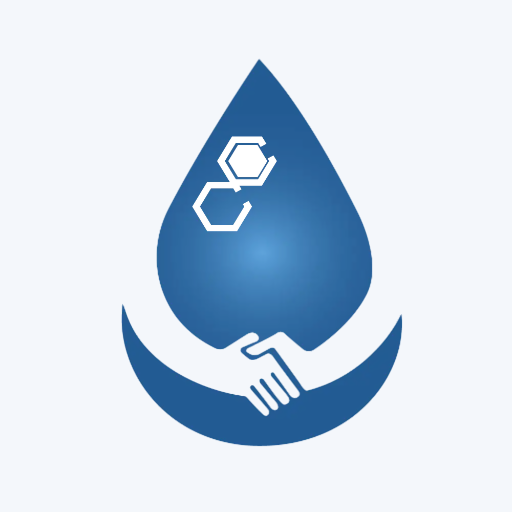
Sodium cyanide is a highly toxic inorganic compound widely used in various industrial processes, including gold and silver mining, electroplating, and chemical synthesis. While the general public may not come into direct contact with it frequently, understanding the safety precautions for potential exposure is crucial to prevent severe health risks, including respiratory distress, cardiac arrest, and even death. This guide aims to provide comprehensive safety measures to ensure personal well - being when encountering sodium cyanide in daily life.
1. Recognizing Sodium Cyanide and Its Hazards
Sodium cyanide appears as white crystalline powder or lumps, often with a faint almond - like odor, although not everyone can detect this smell. It is highly soluble in water and releases hydrogen cyanide gas when exposed to acids, moisture, or high temperatures. This gas is extremely toxic and can be rapidly absorbed through the respiratory system, skin, or eyes, leading to immediate health threats. Even a small amount of Sodium Cyanide ingestion or inhalation can cause symptoms such as rapid breathing, dizziness, headache, nausea, and vomiting. Prolonged or high - level exposure can result in more severe consequences, so being able to identify the presence of Sodium cyanide and its associated risks is the first step in ensuring safety.
2. Personal Protective Equipment (PPE)
When there is a possibility of exposure to sodium cyanide, appropriate personal protective equipment is essential.
Respiratory Protection: Use a self - contained breathing apparatus (SCBA) or a gas - mask with an appropriate filter cartridge designed for cyanide - containing substances. This is crucial as inhalation is one of the most common and dangerous routes of exposure.
Skin Protection: Wear chemical - resistant coveralls, gloves, and boots. Select materials like butyl rubber or neoprene, which offer excellent resistance to sodium cyanide. Ensure that all clothing fits properly to prevent any gaps where the chemical could penetrate.
Eye Protection: Safety goggles or a full - face shield should be worn to protect the eyes from potential splashes or contact with airborne particles. In case of any accidental contact with the eyes, immediate and thorough flushing with water is required.
3. Handling and Storage Precautions
Proper Handling: When handling sodium cyanide, always follow strict protocols. Avoid any physical contact with the substance. Use appropriate tools such as scoops or funnels made of compatible materials to transfer it. Work in a well - ventilated area, preferably with a local exhaust ventilation system, to prevent the accumulation of toxic fumes.
Storage: Store sodium cyanide in a cool, dry, and well - ventilated location, away from acids, oxidizers, and sources of ignition. Keep it in tightly sealed containers made of materials that are resistant to corrosion by the chemical. Label all storage containers clearly with "Sodium Cyanide - Highly Toxic" and relevant hazard symbols. Implement a proper inventory management system to track the quantity and movement of the chemical.
4. Emergency Response
In the event of an accidental exposure or spill of sodium cyanide, immediate action is necessary:
Evacuation: If there is a large - scale spill or release, evacuate the area immediately, following the pre - established emergency evacuation routes. Alert others in the vicinity and ensure that everyone moves to a safe, upwind location.
First Aid: For inhalation exposure, move the affected person to fresh air immediately. If breathing has stopped, start cardiopulmonary resuscitation (CPR) after ensuring personal safety. For skin contact, remove contaminated clothing and wash the affected area thoroughly with soap and water for at least 15 minutes. In case of eye contact, flush the eyes continuously with clean water for 15 minutes while holding the eyelids open. Seek medical attention promptly in all cases.
Spill Cleanup: Only trained personnel wearing appropriate PPE should attempt to clean up sodium cyanide spills. Use absorbent materials compatible with sodium cyanide to contain and collect the spilled substance. Dispose of the contaminated materials according to local environmental and safety regulations.
5. Training and Education
It is important for individuals who may be at risk of exposure to sodium cyanide, such as workers in relevant industries, to receive proper training on its handling, safety precautions, and emergency response. Regular refresher courses should be provided to ensure that everyone remains updated on the latest safety protocols. Moreover, public awareness campaigns can also help educate the general population about the dangers of sodium cyanide and what to do in case of accidental exposure.
By following these safety precautions, you can significantly reduce the risk of exposure to sodium cyanide and protect your health and well - being. Always remember that when dealing with this highly toxic substance, safety should be the top priority. If you have any further questions or need more information, consult with relevant safety experts or regulatory authorities.
- Random Content
- Hot content
- Hot review content
- Sodium Sulfide Industry Grade 60% 30ppm/150ppm Yellow/ Red Flakes Na2s
- Powdery emulsion explosive
- Sodium Peroxide
- Triethanolamine(TEA)
- Fertilizer magnesium sulfate/magnesium sulfate monohydrate
- Isobutyl vinyl ether 98% high purity certified Professional producer
- Are there specific regulations for the use of mining chemicals?
- 1Discounted Sodium Cyanide (CAS: 143-33-9) for Mining - High Quality & Competitive Pricing
- 2China's New Regulations on Sodium Cyanide Exports and Guidance for International Buyers
- 3Sodium Cyanide 98% CAS 143-33-9 gold dressing agent Essential for Mining and Chemical Industries
- 4International Cyanide(Sodium cyanide) Management Code - Gold Mine Acceptance Standards
- 5China factory Sulfuric Acid 98%
- 6Anhydrous Oxalic acid 99.6% Industrial Grade
- 7Oxalic acid for mining 99.6%
- 1High Quality 99% Purity of Cyanuric chloride ISO 9001:2005 REACH Verified Producer
- 2Sodium Cyanide 98% CAS 143-33-9 gold dressing agent Essential for Mining and Chemical Industries
- 3 High-Quality Sodium Cyanide for Leaching
- 4Powdery emulsion explosive
- 5Industry Grade Electron grade 98% Sulfuric Acid H2SO4 Sulphuric Acid Battery Acid Industrial Sulfuric Acid
- 6Colloidal emulsion explosive
- 7sodium hydrosulfide 70% flakes used Mining Industry












Online message consultation
Add comment: